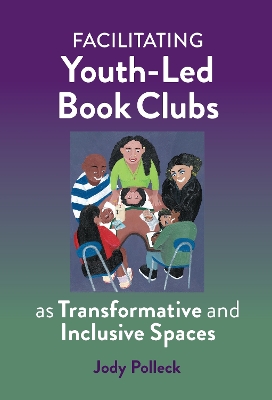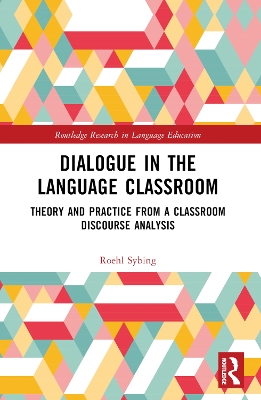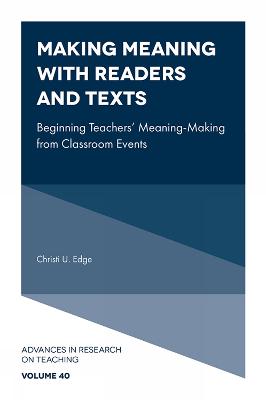Facilitating Youth-Led Book Clubs as Transformative and Inclusive Spaces
 portes grátis
portes grátis
Facilitating Youth-Led Book Clubs as Transformative and Inclusive Spaces
Polleck, Jody
Teachers' College Press
08/2022
176
Dura
Inglês
9780807767511
15 a 20 dias
Descrição não disponível.
Contents
Acknowledgments xi
1. Transformation and Inclusivity: The Foundation for Student-Centered Book Clubs 1
What Has Been My Journey to Book Clubs? 3
What Are Book Clubs? 5
What Does It Mean to Be Transformative and Inclusive? 7
Why Do We Need Book Clubs? 8
What Are the Benefits of Book Clubs? 9
Who Are Book Clubs For? 10
What Are the Theories That Ground Book Clubs? 12
What's Coming Up? 15
2. Getting Book Clubs Started Within Our School Communities 18
Who Can Start and Facilitate Book Clubs? 19
What Is the Purpose of Your Book Clubs and Who Will Participate? 21
Where and When Do We Meet? 21
Which Books Do We Use and How Do We Get Them? 23
How Can We Be More Intentional About the Books We Read? 28
How Do We Get Students to Join Book Clubs? 30
How Do We Build Community to Prepare Students for Classroom-Based Book Clubs? 30
How Do We Build Literacy Skills to Prepare Students for Classroom-Based Book Clubs? 31
3. Creating Student-Centered, Inclusive Spaces Through Culturally Sustaining and Emotionally Responsive Facilitative Practices 36
What Does It Mean to Be a Culturally Sustaining and Emotionally Responsive Facilitator? 38
What Happens During Our First Book Club Session? 45
4. Maintaining, Sustaining, and Assessing Book Club Conversations 55
What Are the Structures We Can Use to Maintain Book Clubs? 57
What Are the Rituals We Can Use to Sustain Our Book Clubs? 66
What Mini-Lessons Can We Use to Sustain Our Book Clubs? 68
How Can We Nurture Students' Reading Outside of Book Club? 72
What Assessments Can We Use to Maintain and Sustain Student Progress? 74
5. Developing Literacies and Spaces for Emotional and Identity-Based Engagements 81
What Do We Mean By Literacy Development? 82
What Does It Mean to Engage in Emotional and Identity-Based Work? 86
How Can We Address Trauma Within Our Book Clubs? 93
How Do We Simultaneously Address Reading Development Along With Emotional and Identity-Based Work? 94
How Do We Integrate Writing Into Book Clubs? 101
6. Developing Students' Social Awareness, Interpersonal Relationships, and Agency 104
How Can We Use Book Clubs to Develop Students' Social Literacies? 106
How Can Book Clubs Center Social Awareness? 112
How Can Book Clubs Help Students Develop Relationships? 114
How Can We Use Book Clubs to Impact Students' Sense of Agency? 121
7. Engaging With Youth Families and in Digital Spaces 129
How Can Book Clubs Be Inclusive of Our Students' Families? 129
What Do Book Clubs Look Like in Digital Spaces? 133
Epilogue: Centering Joy in Book Club Spaces 138
References 143
Index 156
About the Author 164
Acknowledgments xi
1. Transformation and Inclusivity: The Foundation for Student-Centered Book Clubs 1
What Has Been My Journey to Book Clubs? 3
What Are Book Clubs? 5
What Does It Mean to Be Transformative and Inclusive? 7
Why Do We Need Book Clubs? 8
What Are the Benefits of Book Clubs? 9
Who Are Book Clubs For? 10
What Are the Theories That Ground Book Clubs? 12
What's Coming Up? 15
2. Getting Book Clubs Started Within Our School Communities 18
Who Can Start and Facilitate Book Clubs? 19
What Is the Purpose of Your Book Clubs and Who Will Participate? 21
Where and When Do We Meet? 21
Which Books Do We Use and How Do We Get Them? 23
How Can We Be More Intentional About the Books We Read? 28
How Do We Get Students to Join Book Clubs? 30
How Do We Build Community to Prepare Students for Classroom-Based Book Clubs? 30
How Do We Build Literacy Skills to Prepare Students for Classroom-Based Book Clubs? 31
3. Creating Student-Centered, Inclusive Spaces Through Culturally Sustaining and Emotionally Responsive Facilitative Practices 36
What Does It Mean to Be a Culturally Sustaining and Emotionally Responsive Facilitator? 38
What Happens During Our First Book Club Session? 45
4. Maintaining, Sustaining, and Assessing Book Club Conversations 55
What Are the Structures We Can Use to Maintain Book Clubs? 57
What Are the Rituals We Can Use to Sustain Our Book Clubs? 66
What Mini-Lessons Can We Use to Sustain Our Book Clubs? 68
How Can We Nurture Students' Reading Outside of Book Club? 72
What Assessments Can We Use to Maintain and Sustain Student Progress? 74
5. Developing Literacies and Spaces for Emotional and Identity-Based Engagements 81
What Do We Mean By Literacy Development? 82
What Does It Mean to Engage in Emotional and Identity-Based Work? 86
How Can We Address Trauma Within Our Book Clubs? 93
How Do We Simultaneously Address Reading Development Along With Emotional and Identity-Based Work? 94
How Do We Integrate Writing Into Book Clubs? 101
6. Developing Students' Social Awareness, Interpersonal Relationships, and Agency 104
How Can We Use Book Clubs to Develop Students' Social Literacies? 106
How Can Book Clubs Center Social Awareness? 112
How Can Book Clubs Help Students Develop Relationships? 114
How Can We Use Book Clubs to Impact Students' Sense of Agency? 121
7. Engaging With Youth Families and in Digital Spaces 129
How Can Book Clubs Be Inclusive of Our Students' Families? 129
What Do Book Clubs Look Like in Digital Spaces? 133
Epilogue: Centering Joy in Book Club Spaces 138
References 143
Index 156
About the Author 164
Este título pertence ao(s) assunto(s) indicados(s). Para ver outros títulos clique no assunto desejado.
Literature circle and secondary students; youth social-emotional learning; middle and high school student literacy development; equity- and asset-based instruction in secondary schools; culturally-sustaining instruction in middle schools; CSP; culturally sustaining pedagogy in high schools; culturally relevant pedagogy; CRP; inclusive school cultures; young adult identity development work; relationship-building pedagogy; digital conferencing tools in high schools; LGBTQ+ stu; neurodiverse students; cultural and linguistic diversity in middle and high school students; student book clubs
Contents
Acknowledgments xi
1. Transformation and Inclusivity: The Foundation for Student-Centered Book Clubs 1
What Has Been My Journey to Book Clubs? 3
What Are Book Clubs? 5
What Does It Mean to Be Transformative and Inclusive? 7
Why Do We Need Book Clubs? 8
What Are the Benefits of Book Clubs? 9
Who Are Book Clubs For? 10
What Are the Theories That Ground Book Clubs? 12
What's Coming Up? 15
2. Getting Book Clubs Started Within Our School Communities 18
Who Can Start and Facilitate Book Clubs? 19
What Is the Purpose of Your Book Clubs and Who Will Participate? 21
Where and When Do We Meet? 21
Which Books Do We Use and How Do We Get Them? 23
How Can We Be More Intentional About the Books We Read? 28
How Do We Get Students to Join Book Clubs? 30
How Do We Build Community to Prepare Students for Classroom-Based Book Clubs? 30
How Do We Build Literacy Skills to Prepare Students for Classroom-Based Book Clubs? 31
3. Creating Student-Centered, Inclusive Spaces Through Culturally Sustaining and Emotionally Responsive Facilitative Practices 36
What Does It Mean to Be a Culturally Sustaining and Emotionally Responsive Facilitator? 38
What Happens During Our First Book Club Session? 45
4. Maintaining, Sustaining, and Assessing Book Club Conversations 55
What Are the Structures We Can Use to Maintain Book Clubs? 57
What Are the Rituals We Can Use to Sustain Our Book Clubs? 66
What Mini-Lessons Can We Use to Sustain Our Book Clubs? 68
How Can We Nurture Students' Reading Outside of Book Club? 72
What Assessments Can We Use to Maintain and Sustain Student Progress? 74
5. Developing Literacies and Spaces for Emotional and Identity-Based Engagements 81
What Do We Mean By Literacy Development? 82
What Does It Mean to Engage in Emotional and Identity-Based Work? 86
How Can We Address Trauma Within Our Book Clubs? 93
How Do We Simultaneously Address Reading Development Along With Emotional and Identity-Based Work? 94
How Do We Integrate Writing Into Book Clubs? 101
6. Developing Students' Social Awareness, Interpersonal Relationships, and Agency 104
How Can We Use Book Clubs to Develop Students' Social Literacies? 106
How Can Book Clubs Center Social Awareness? 112
How Can Book Clubs Help Students Develop Relationships? 114
How Can We Use Book Clubs to Impact Students' Sense of Agency? 121
7. Engaging With Youth Families and in Digital Spaces 129
How Can Book Clubs Be Inclusive of Our Students' Families? 129
What Do Book Clubs Look Like in Digital Spaces? 133
Epilogue: Centering Joy in Book Club Spaces 138
References 143
Index 156
About the Author 164
Acknowledgments xi
1. Transformation and Inclusivity: The Foundation for Student-Centered Book Clubs 1
What Has Been My Journey to Book Clubs? 3
What Are Book Clubs? 5
What Does It Mean to Be Transformative and Inclusive? 7
Why Do We Need Book Clubs? 8
What Are the Benefits of Book Clubs? 9
Who Are Book Clubs For? 10
What Are the Theories That Ground Book Clubs? 12
What's Coming Up? 15
2. Getting Book Clubs Started Within Our School Communities 18
Who Can Start and Facilitate Book Clubs? 19
What Is the Purpose of Your Book Clubs and Who Will Participate? 21
Where and When Do We Meet? 21
Which Books Do We Use and How Do We Get Them? 23
How Can We Be More Intentional About the Books We Read? 28
How Do We Get Students to Join Book Clubs? 30
How Do We Build Community to Prepare Students for Classroom-Based Book Clubs? 30
How Do We Build Literacy Skills to Prepare Students for Classroom-Based Book Clubs? 31
3. Creating Student-Centered, Inclusive Spaces Through Culturally Sustaining and Emotionally Responsive Facilitative Practices 36
What Does It Mean to Be a Culturally Sustaining and Emotionally Responsive Facilitator? 38
What Happens During Our First Book Club Session? 45
4. Maintaining, Sustaining, and Assessing Book Club Conversations 55
What Are the Structures We Can Use to Maintain Book Clubs? 57
What Are the Rituals We Can Use to Sustain Our Book Clubs? 66
What Mini-Lessons Can We Use to Sustain Our Book Clubs? 68
How Can We Nurture Students' Reading Outside of Book Club? 72
What Assessments Can We Use to Maintain and Sustain Student Progress? 74
5. Developing Literacies and Spaces for Emotional and Identity-Based Engagements 81
What Do We Mean By Literacy Development? 82
What Does It Mean to Engage in Emotional and Identity-Based Work? 86
How Can We Address Trauma Within Our Book Clubs? 93
How Do We Simultaneously Address Reading Development Along With Emotional and Identity-Based Work? 94
How Do We Integrate Writing Into Book Clubs? 101
6. Developing Students' Social Awareness, Interpersonal Relationships, and Agency 104
How Can We Use Book Clubs to Develop Students' Social Literacies? 106
How Can Book Clubs Center Social Awareness? 112
How Can Book Clubs Help Students Develop Relationships? 114
How Can We Use Book Clubs to Impact Students' Sense of Agency? 121
7. Engaging With Youth Families and in Digital Spaces 129
How Can Book Clubs Be Inclusive of Our Students' Families? 129
What Do Book Clubs Look Like in Digital Spaces? 133
Epilogue: Centering Joy in Book Club Spaces 138
References 143
Index 156
About the Author 164
Este título pertence ao(s) assunto(s) indicados(s). Para ver outros títulos clique no assunto desejado.
Literature circle and secondary students; youth social-emotional learning; middle and high school student literacy development; equity- and asset-based instruction in secondary schools; culturally-sustaining instruction in middle schools; CSP; culturally sustaining pedagogy in high schools; culturally relevant pedagogy; CRP; inclusive school cultures; young adult identity development work; relationship-building pedagogy; digital conferencing tools in high schools; LGBTQ+ stu; neurodiverse students; cultural and linguistic diversity in middle and high school students; student book clubs







